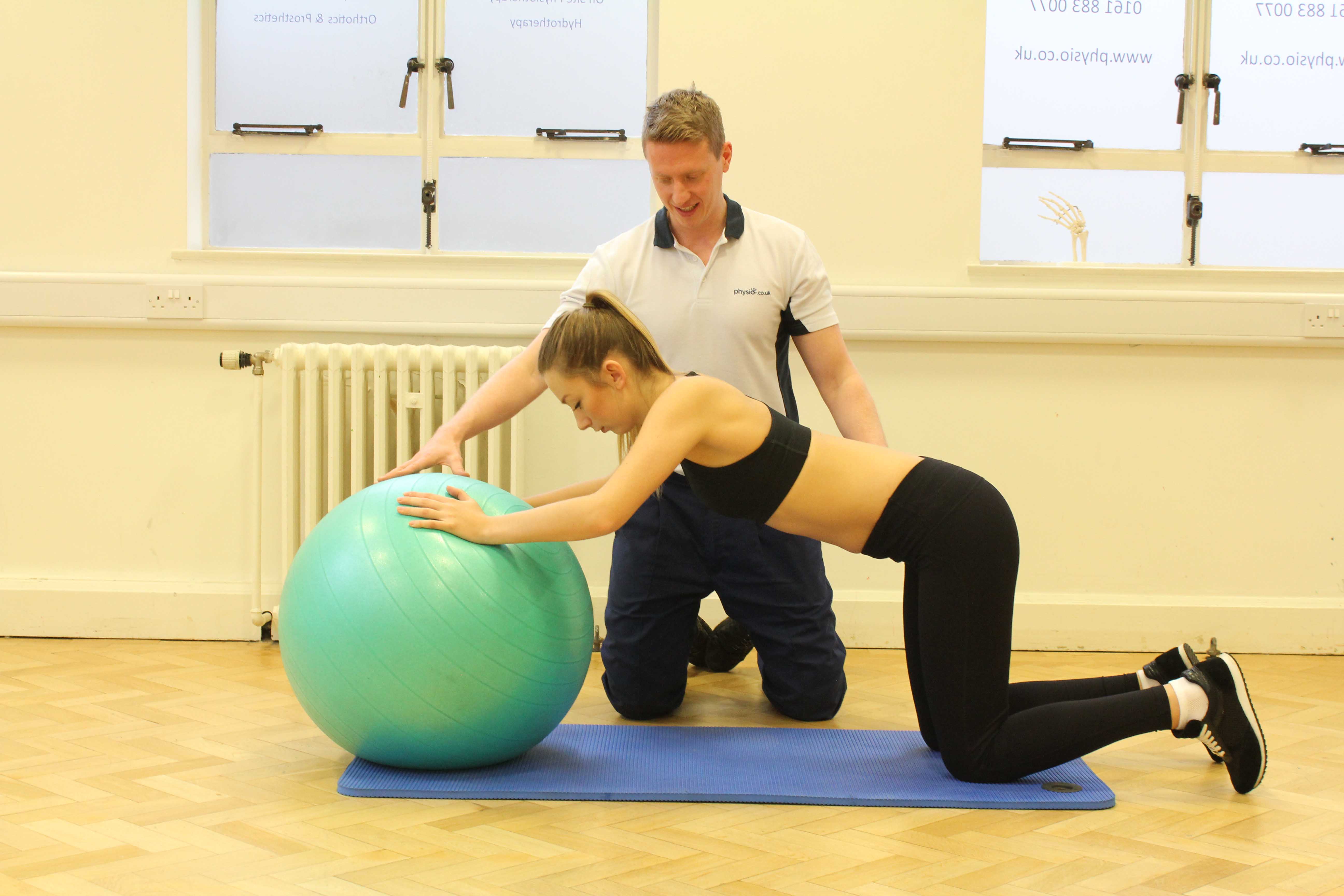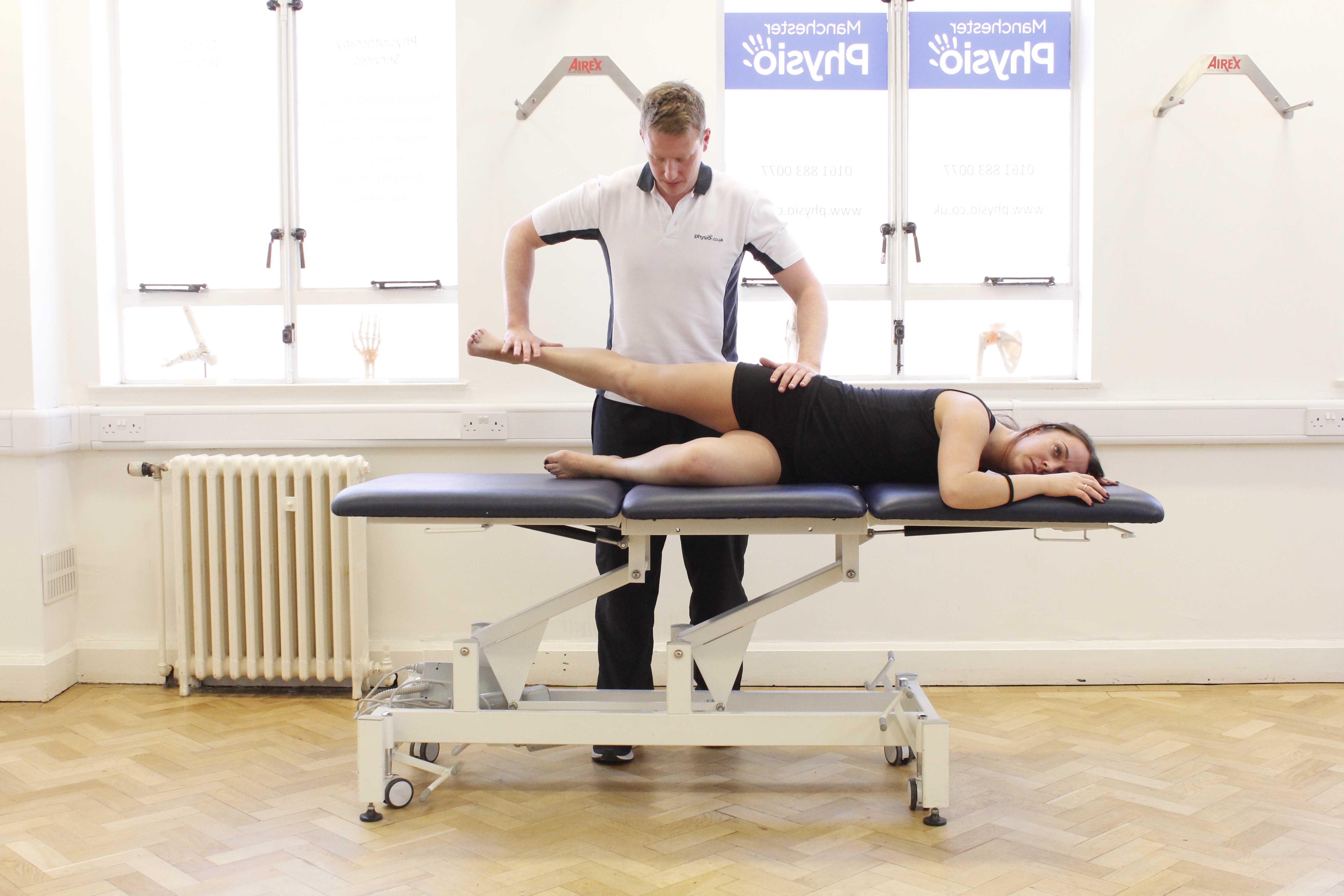What is Ehlers-Danlos syndrome?
Ehlers-Danlos syndrome is an inherited condition which restricts the strength of ligaments, muscles, tendons, skin and blood vessels. These structures usually have a high amount of collagen in them which gives them the support they need. However, in Ehlers-Danlos syndrome the collagen formation is reduced meaning that the connective tissue becomes weaker and lax.
Although there is no cure for Ehlers-Danlos syndrome, physiotherapy is a very effective way to minimise the symptoms and help maintain a healthy and active lifestyle. Physio.co.uk have specialist rheumatological physiotherapists who are experienced at assessing and treating Ehlers-Danlos syndrome.
 Above: Scapular movement assessment by experienced MSK Physiotherapist
Above: Scapular movement assessment by experienced MSK PhysiotherapistWhat are the symptoms of Ehlers-Danlos syndrome?
There are a number of different symptoms associated with Ehlers-Danlos syndrome depending on which area of the body is affected. It is important that you begin your physiotherapy programme with Physio.co.uk as soon as you experience the first symptoms of Ehlers-Danlos syndrome as this will maximise your potential. Possible symptoms include:
- Hypermobile joints
- Weakness
- Pain
- Elastic skin
- Dislocations
- Increased risk of injury
- Flat feet
- Poor balance
- Osteoarthritis
- Poor posture
- Joint instability
- Spinal deformities
 Above: Toning and stabilisation exercises supervised by a senior MSK physiotherapist
Above: Toning and stabilisation exercises supervised by a senior MSK physiotherapistHow is Ehlers-Danlos syndrome diagnosed?
There are a number of different tests used to diagnose ehlers-danlos syndrome and your doctor will often use a combination of these to accurately confirm the condition. Tests may include:
- Physical examination
- Biopsies
- Blood tests
- X-rays
- MRI scans
How will physiotherapy help with Ehlers-Danlos syndrome?
Physiotherapy is a very effective way of treating Ehlers-Danlos syndrome. The specialist physiotherapists at Physio.co.uk will provide you with a full assessment to direct your individualised treatment programme. Your physiotherapist will encourage you to play an active role in your rehabilitation and you will be able to work together to create goals and targets to meet your needs. Physiotherapy can help with Ehlers-Danlos syndrome in the following ways:
- Increase strength
- Add stability to joints
- Facilitate healing of damaged soft tissue
- Reduce pain
- Provide support to affected areas
- Improve balance
- Improve posture
- Reduce the risk of injury
What physiotherapy will be used for Ehlers-Danlos syndrome?
There are a variety of physiotherapy options to treat Ehlers-Danlos syndrome. The choice made by your physiotherapist at Physio.co.uk will depend on the affected area, the severity of your condition and the range of symptoms. Your physiotherapy programme will be adapted according to your current symptoms and will be tailored to your specific needs. Potential physiotherapy may include:
- Strengthening exercises
- Stability exercises
- Balance retraining
- Cardiovascular activities
- Wax therapy
- Electrotherapy including ultrasound and megapulse
- Splinting of joints
- Provision of specialist equipment and adaptations to help you around the home
- Pacing advice
- Postural exercises
- Pain control modalities
- Joint protection education
 Above: Toning and strenghtening exercises assisted by specialist MSK Physiotherapist
Above: Toning and strenghtening exercises assisted by specialist MSK PhysiotherapistSummary
Ehlers-Danlos syndrome is an inherited condition which reduces the structure of collagen containing soft tissue including ligaments, skin, muscles, tendons and blood vessels. There is no cure for Ehlers-Danlos syndrome and therefore it is essential to use good techniques to manage the condition and keep it under control. Physiotherapy is a successful way of proving support to affected joints and helping you continue with your normal activities of daily living. Physio.co.uk have experienced rheumatological physiotherapists who will devise a structured and individualised rehabilitation programme to suit your needs. Please call Physio.co.uk on 0330 088 7800 to book an appointment today, or you can also book online!

 0330 088 7800
0330 088 7800


































